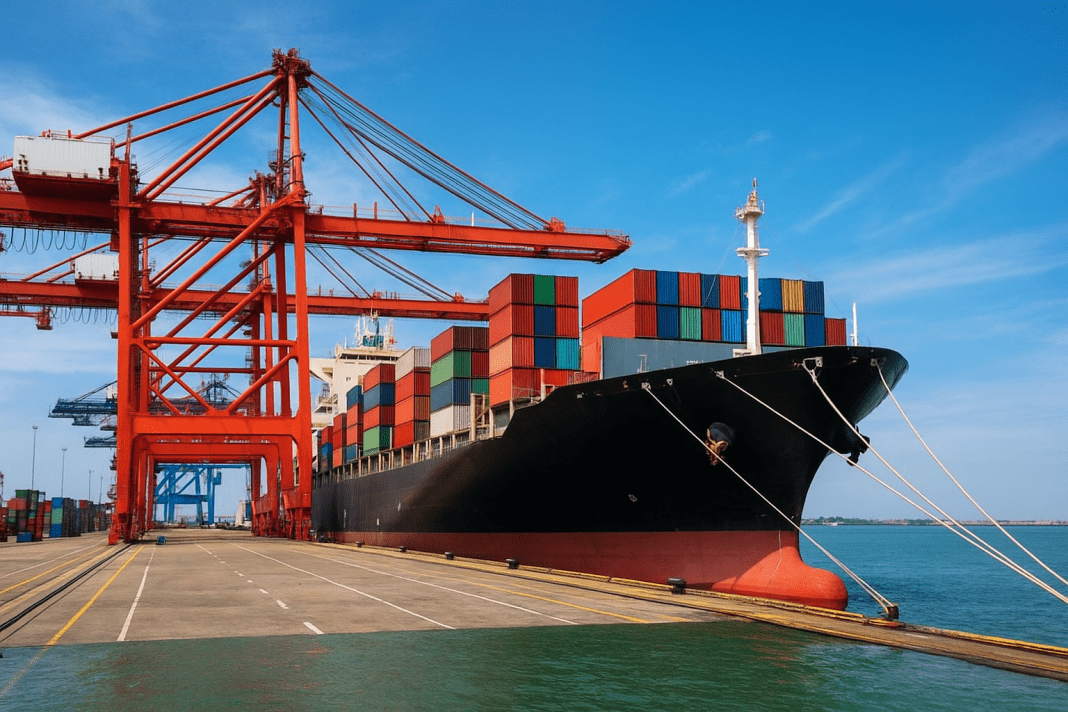Less than three weeks remain before a new US port fee targeting China-built or China-operated vessels takes effect. In response, major shipping carriers are already making significant adjustments to avoid the extra cost. Initially, most carriers are opting to change their vessel deployments rather than immediately passing the fees on to their clients.
Early Signs of Vessel Shifts in Transpacific Ports
Shipping consultancy Sea Intelligence highlighted early signs of a reduction in Chinese-built vessels on the transpacific route. Their report showed that for the Asia-North America west coast trade, the share of Chinese-built ships has declined from 25-30 percent in the first half of 2025 to around 20-25 percent in recent weeks.
The trend is also visible on the Asia-North America east coast trade, although it is less pronounced. However, the consultancy noted that similar changes have not yet appeared in the transatlantic trade, suggesting the adjustments are currently focused on ports connecting Asia with the US.
Cosco Shipping Lines, a major container operator, has confirmed it will continue stable operations on its US routes despite the upcoming port fees. The company emphasized that while the port service fees may create operational challenges, it will optimize its services and maintain competitive freight rates in line with market conditions.
Financial Impact of US Port Fees on Chinese Carriers
Chinese shipowners and operators are expected to face the largest impact from the upcoming US port fee. Analysts at HSBC estimated that companies like Cosco Shipping Holdings and its Hong Kong-listed subsidiary, Orient Overseas Container Line, could incur costs exceeding US$2.1 billion in 2026 due to the fees.
To manage this financial burden, Chinese carriers may cooperate with global partners to deploy non-Chinese-built vessels on US trade routes. Another strategy involves rerouting cargo through transshipment hubs in Canada, Mexico, or the Caribbean, allowing ships to bypass US ports and avoid the fees altogether.
Shocking Betrayal: Chinese Fishing Vessels Exploit North Korean Workers to Evade Sanctions
Non-Chinese carriers can better avoid the fees by adjusting their existing networks. HSBC data shows that non-China-built vessels make up 71 percent of global container capacity. Additionally, Chinese-built vessels handle only 15 percent of US port calls by tonnage. This means many non-Chinese carriers can continue operations with minimal impact from the new fees.
French container-shipping company CMA CGM also confirmed it does not plan to implement a surcharge to cover the US port fee. The company stated that fleet and operational adjustments ahead of October 14 will allow it to maintain service coverage to all scheduled US ports while minimizing the impact of the new fees.
Global Strategies to Bypass US Port Fees
Several carriers are taking bold measures to circumvent the upcoming US port fee. Seaspan, a major container ship lender and operator, is relocating its headquarters from Hong Kong to Singapore on October 1. The company will also reflag approximately 100 vessels under the Singapore registry, effectively avoiding the US port fee.
Experts suggest that some Chinese carriers may increasingly rely on partnerships with global shipping alliances to deploy vessels that are not subject to US port regulations. This strategy allows for continued trade without directly facing the new charges.
Chinese Vessels Gather Near Philippines’ Strategic Thitu Island
Meanwhile, carriers that already have a majority of non-China-built vessels in their fleets face less disruption. They can adjust their deployment schedules, reroute cargo, or make minor operational changes to bypass the port fees entirely. These moves ensure that shipping operations remain consistent while avoiding the financial hit from the new port charges.
Overall, the shipping industry is actively preparing for the US port fee, with many carriers already implementing changes. The shifts in vessel deployment, corporate strategies, and operational adjustments reflect a coordinated effort to minimize costs and maintain stable service across US ports.

